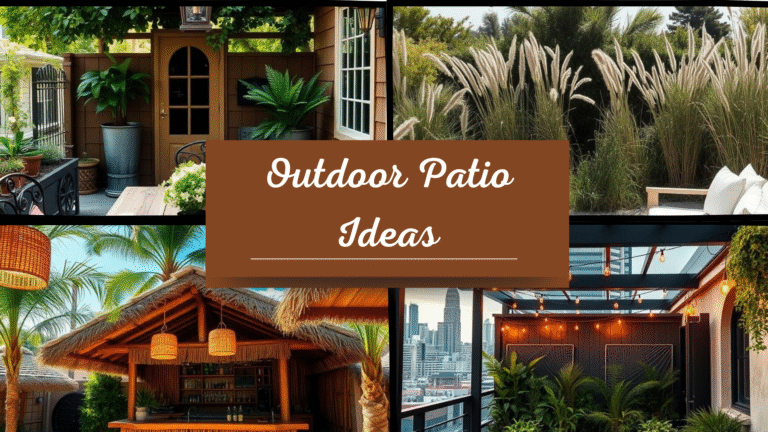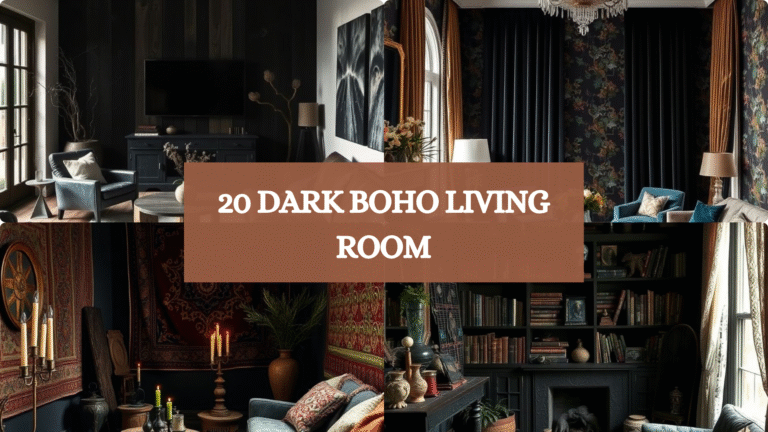Garden Lighting Ideas: 20 Ways to Transform Your Outdoors
A well-lit garden doesn’t just look pretty at night—it becomes usable, safer, and more expressive. The right lighting draws the eye to textures, creates depth, and makes small spaces feel expansive. In this guide, you’ll find 20 garden lighting ideas crafted for an image-led article format. Each heading includes five short paragraphs that explain placement, design intent, mood, and practical tips. Use these as creative direction for photos, mood boards, or AI-generated visuals.
1) Solar Pathway Lights for Soft, Safe Walkways
A line of solar path lights can guide movement and instantly make a garden feel curated. They’re ideal for renters or low-maintenance setups because there’s no wiring or trenching. Space the fixtures evenly to keep the rhythm consistent and avoid bright-hot spots. Warm white temperatures around 2700K–3000K feel inviting and flatter foliage.
Choose stakes with diffused lenses to soften glare on eyes at night. Diffusion also helps blend individual points of light into a continuous glow. Use staggered placement rather than a strict “runway” on both sides. The asymmetry looks more natural and lets plants spill into the path.
If your path curves, echo that line with gentle arcs of light. The result feels calm and intuitive, especially in cottage-style gardens.
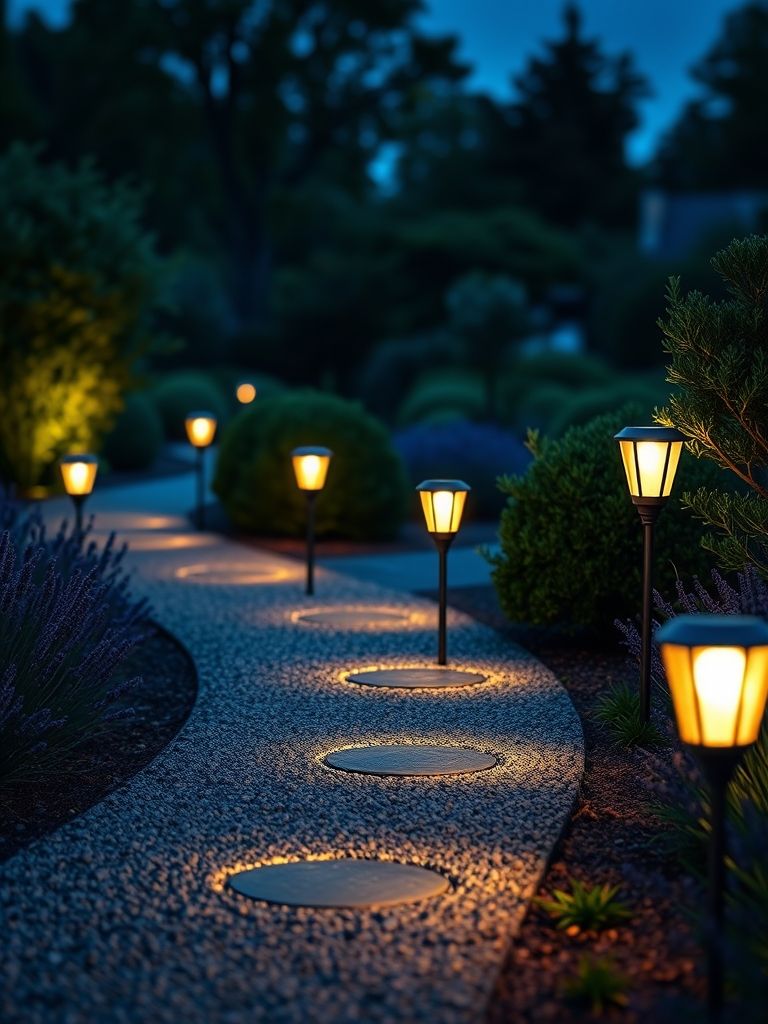
2) Tree Uplighting to Sculpt Dramatic Canopies
Uplighting transforms trees into nighttime sculptures. Aim narrow beams up the trunk to accentuate bark texture and branch architecture. For mature trees, use two or three fixtures at slightly different angles. This reduces harsh shadows and creates a fuller, more dimensional effect.
Try warmer light on evergreens and neutral-white on smooth-bark species. The temperature shift can subtly change perceived color and depth. Recess fixtures at grade with glare shields to keep beams controlled. Shielding protects neighbors’ sightlines and prevents light spill into windows.
Test positions at dusk and adjust until you like the shadow play overhead. A few inches of movement can dramatically change the canopy’s drama.
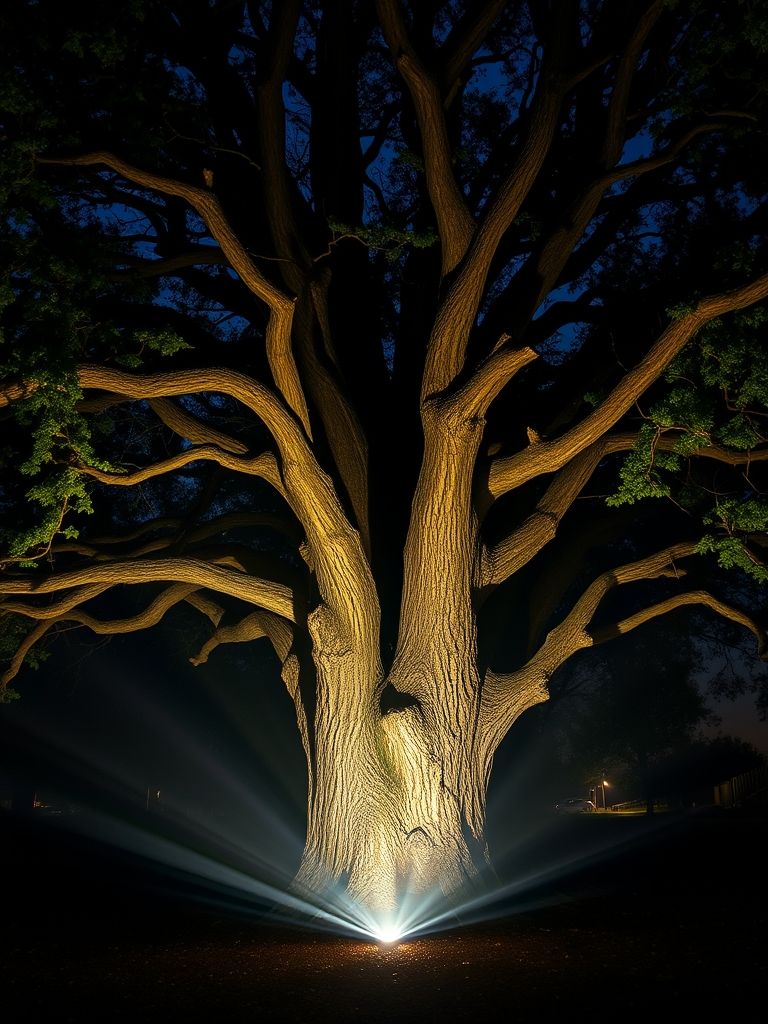
3) Moonlighting from High Branches for Natural Glow
Moonlighting mimics the soft, dappled light of a full moon. Place downlights high in trees, aiming beams through leaves to cast moving patterns. The higher the fixture, the broader and gentler the pool of light. Use long shrouds to avoid visible hot spots when viewed from below.
Keep color temperatures warm-neutral to maintain a natural feel. Overly cool light can look stark and theatrical in residential settings. Run cables neatly along trunks with non-invasive straps. Leave room for growth and avoid piercing bark or constricting branches.
Layer moonlighting with low path lights so feet are guided while faces stay comfortably lit. The combination reads cozy and effortless.
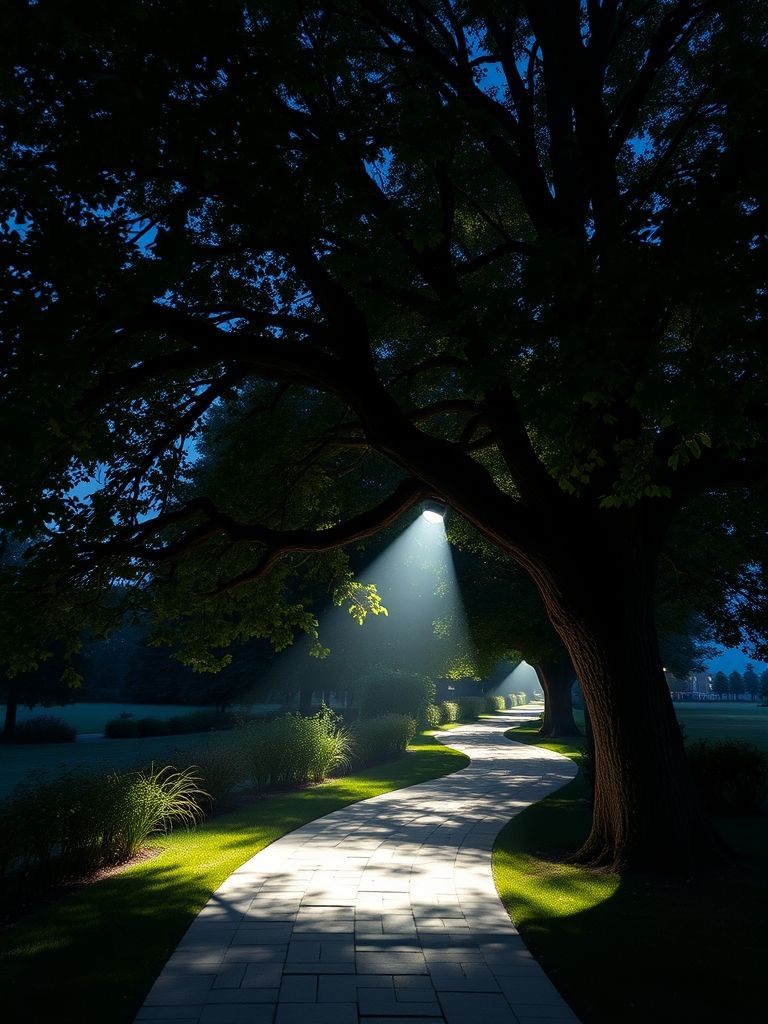
4) Pergola String Lights for Intimate Dining Zones
String lights define a ceiling outdoors and set an instant festive mood. Over a pergola, they create a canopy that frames dining and lounge areas. Use evenly spaced catenary drapes to form soft curves overhead. The repeated swoops add visual cadence and look great in photos.
Choose shatter-resistant, weather-rated bulbs with replaceable sockets. This extends lifespan and simplifies seasonal maintenance.
Keep brightness moderate so food and faces glow without glare. Dimmer-compatible strands offer flexible ambiance from sunset to late night. Finish with a warm table lantern or candle cluster to anchor the center. The layered sparkle feels welcoming and restaurant-like.
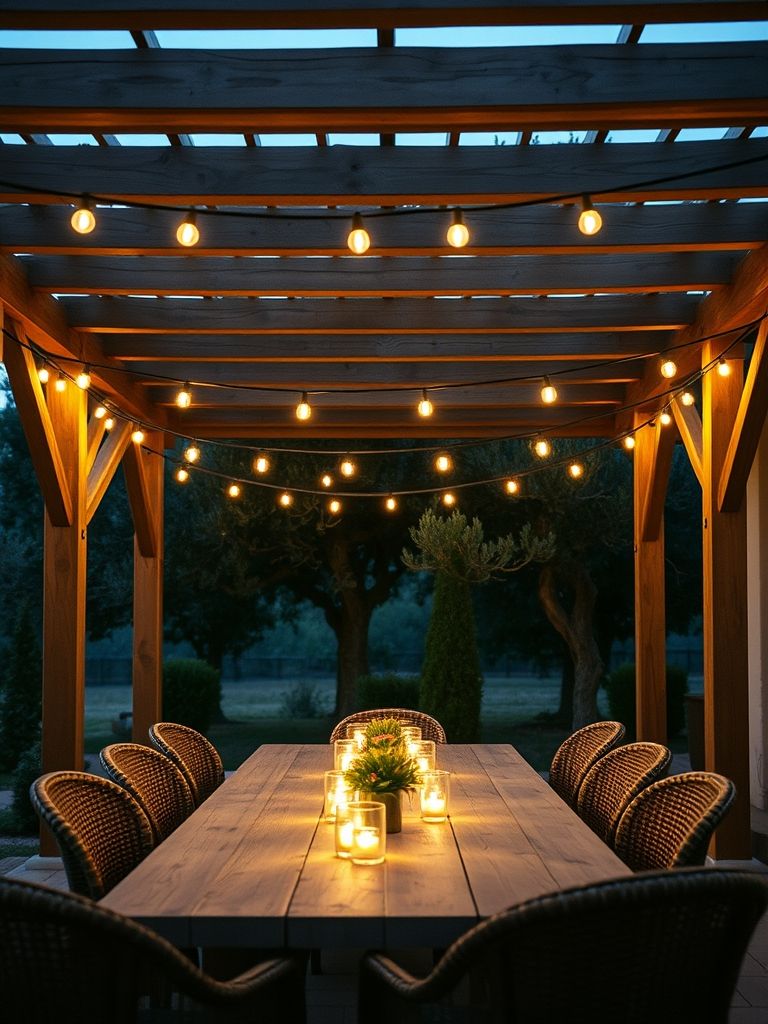
5) Lantern Clusters along Seating Nooks
Freestanding lanterns add a portable, sculptural element to seating corners. Mix heights and styles for a collected, travel-inspired look. Place lanterns where they won’t be kicked or trip guests. Corners, plant shelves, and low walls are reliable, photogenic spots.
Use LED candles or rechargeable pucks for safe, flicker-like warmth. Soft flame effects create intimacy without smoke or soot. Metal and rattan finishes patinate beautifully outdoors. A few weathered touches make the setting feel lived-in and relaxed.
At night, the cluster reads like a small hearth. During the day, it doubles as decor that frames cushions and throws.
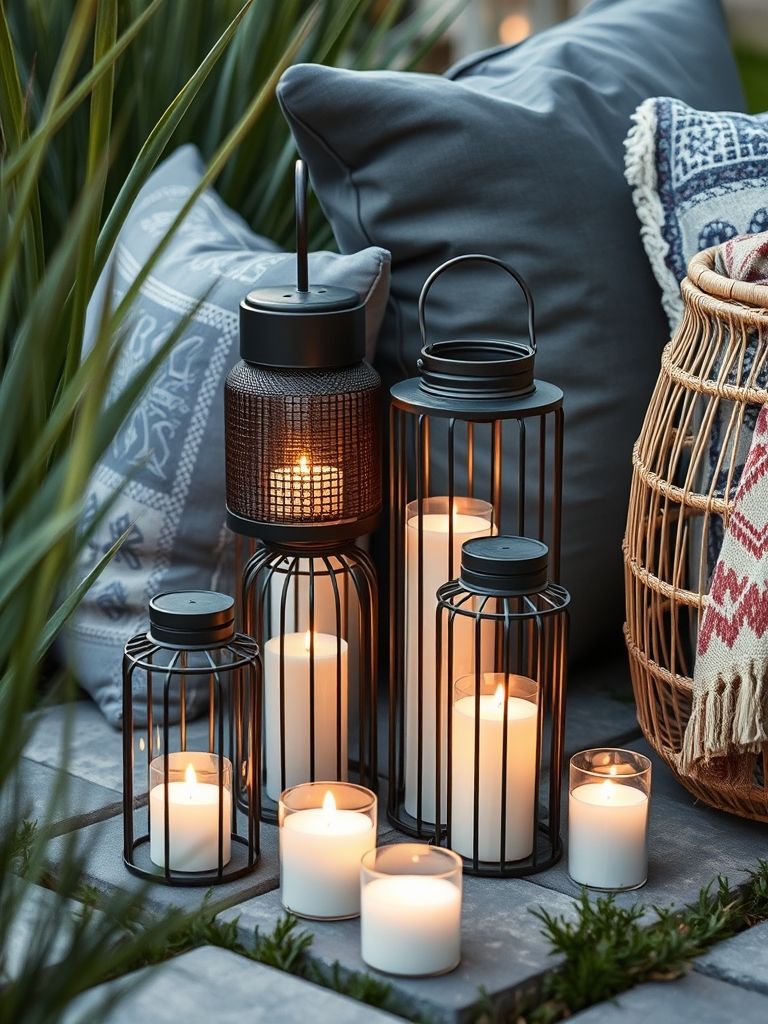
6) Recessed Deck and Step Lights for Invisible Safety
Recessed fixtures disappear into surfaces, making light the hero. Stair treads, risers, and deck perimeters benefit most. Aim for low, lateral illumination that grazes surfaces. This reveals texture while keeping beams out of guests’ eyes.
Uniform spacing matters more than absolute brightness here. Even coverage lets people judge depth and distance accurately. Use warm temperatures to complement wood tones. Cooler light can wash out grain and feel overly commercial.
Seal edges against moisture and choose corrosion-resistant housing. Good installation is key to longevity in exposed locations.
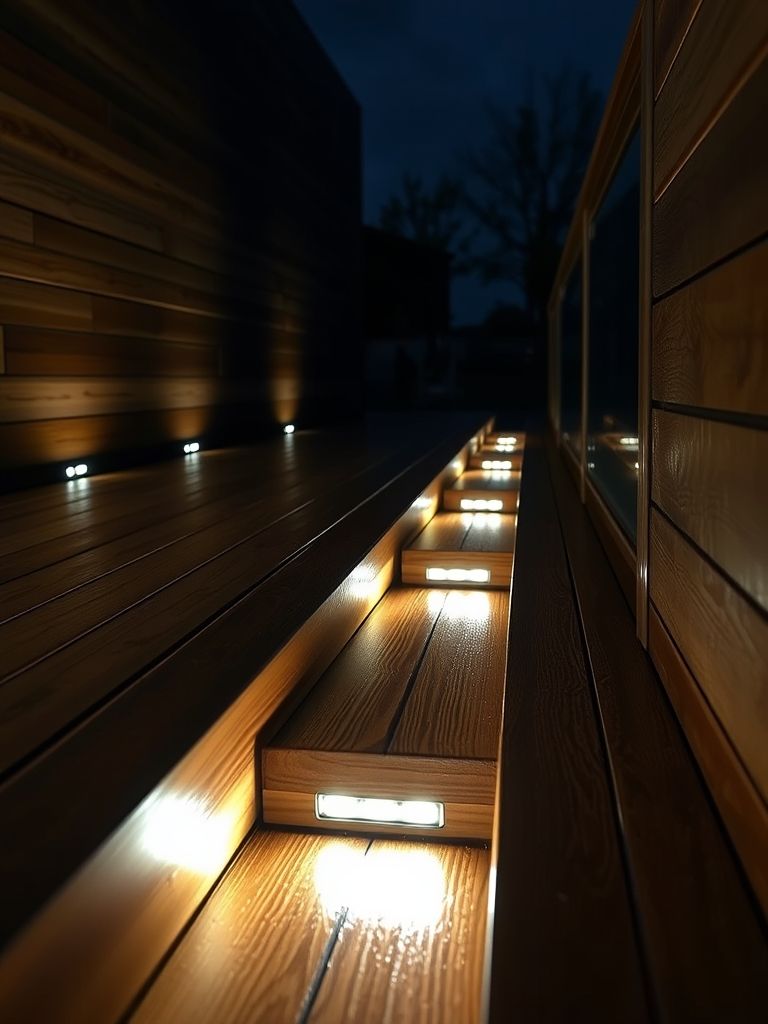
7) Water Feature Illumination for Liquid Sparkle
Lighting water invites movement and sparkle into the nightscape. Submersible spotlights or edge-mounted LEDs both work well.
Aim cross-beams to catch ripples rather than blasting from one side. The interplay of highlight and shadow looks magical in photos. For ponds, try soft grazing along stone edges. In fountains, accent the vertical plume or the bowl lip for a sculptural effect.
Mind electrical safety and use proper wet-location gear. Low-voltage systems are safer and easier to service. Turn off underwater lights when water clarity is low. Haze scatters light and reduces the crisp shimmer you want.
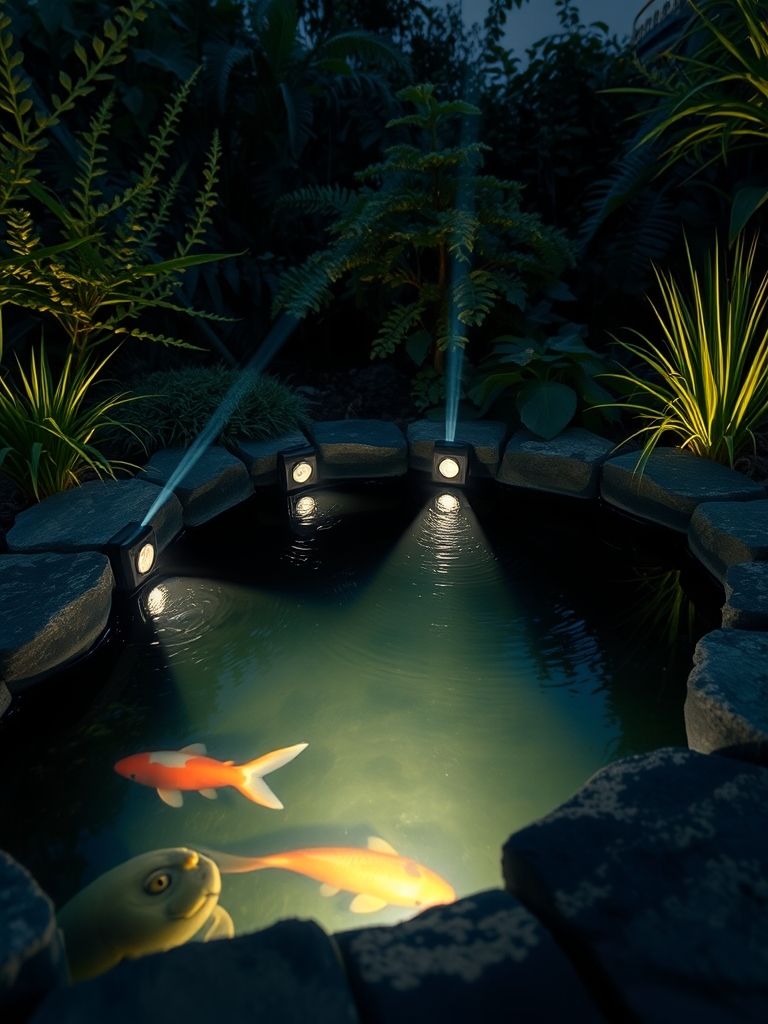
8) Wall Washing to Expand Small Gardens
Narrow courtyard with brick wall evenly wall-washed by linear LEDs, low sofa and planters in front, warm gradient on texture, dark pavers for contrast, intimate night scene, 24mm architectural shot, no people.
Wall washing throws broad, even light across vertical surfaces. It visually “pushes” boundaries outward and makes small gardens feel larger.
Install linear LEDs or wide-flood fixtures close to the wall. Aim slightly upward to create a gentle gradient, not a hot center. Textured stucco, brick, or timber cladding reacts beautifully. The grazing effect reveals relief and adds nighttime character.
Keep output modest to avoid flattening plants in front. A soft wash should support, not steal the scene. Pair with darker ground planes so walls become the canvas. The contrast makes seating areas feel cozy and defined.
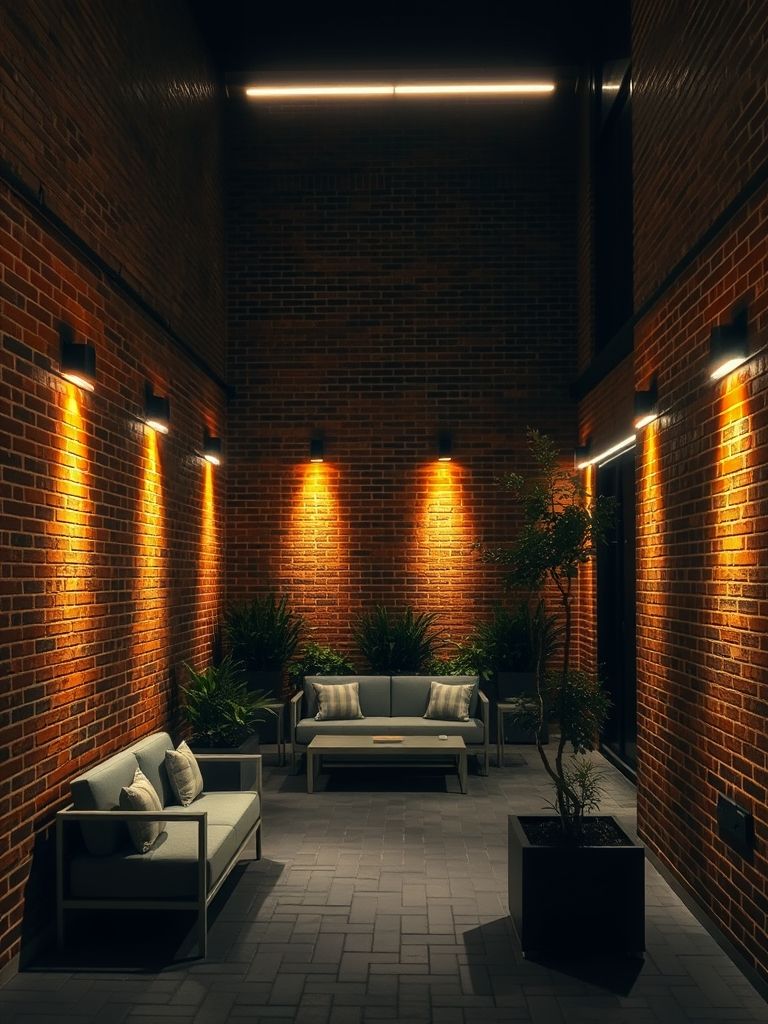
9) Silhouette Lighting behind Grasses and Screens
Placing light behind tall grasses or perforated screens creates silhouettes. The shapes feel artistic and change with the wind. Use narrow-beam spots or short linear fixtures at low height. Aim back toward the backdrop rather than into viewers’ eyes.
Feather multiple fixtures for longer stretches of planting. Overlap beams lightly to maintain a continuous glow. Choose subjects with interesting outlines—miscanthus, bamboo, or laser-cut panels. Their forms translate well at night.
Silhouette scenes are powerful with minimal brightness. Let the negative space do the talking for a calm, gallery-like mood.
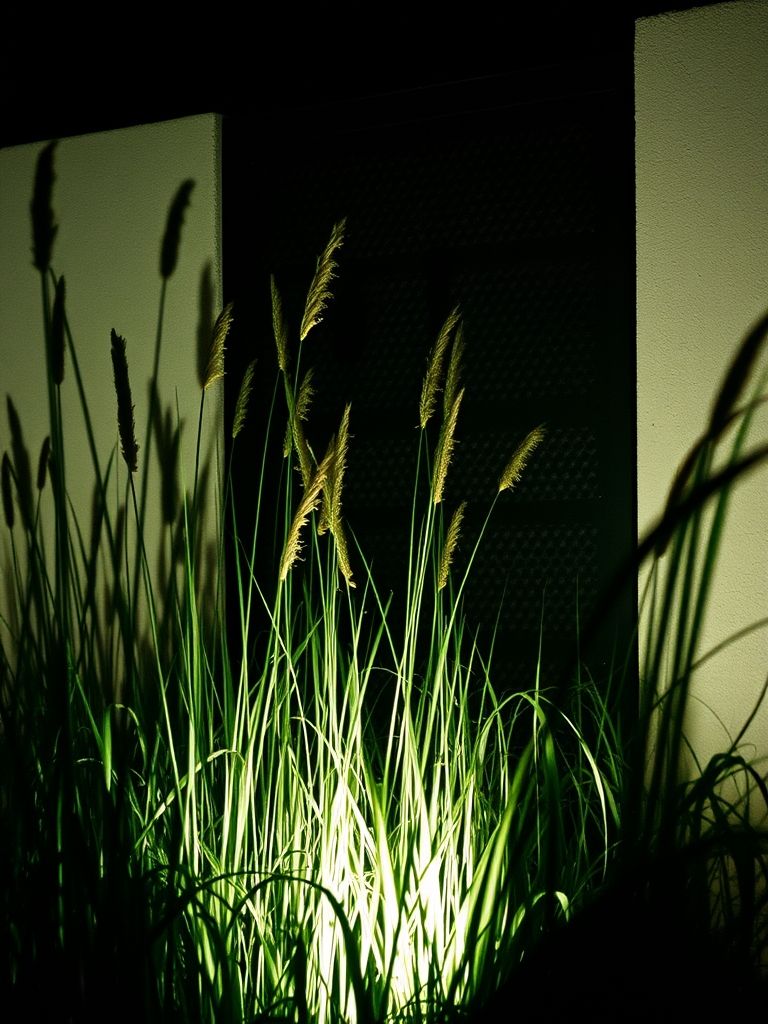
10) Spotlighting Garden Art and Sculptures
A single, well-aimed spotlight can turn a sculpture into a focal point. The right angle brings out contours and material richness.
Experiment with three-point techniques: key, fill, and a soft backlight. Even two fixtures can create satisfying dimensionality. Use tight beams to avoid lighting the surroundings. Isolation increases drama and keeps attention on the piece.
Mind shadows cast onto paths or windows. Adjust angles until the shadow falls harmlessly into planting beds. Bronze, stone, and ceramic each respond differently to color temperature. Test warm and neutral tones to find the most flattering look.

11) Bollard Lights to Define Borders
Bollards provide vertical punctuation along drives and long paths. Their human-scale height is readable from a distance.
Pick designs with internal shielding to reduce glare. You want glow, not bare bulbs at eye level. Space bollards farther apart than you think. Overcrowding looks commercial and can create a harsh strip of light.
Use them to signal transitions—entry courts, gate approaches, and intersections. The vertical rhythm helps with wayfinding. In modern gardens, sleek, matte finishes blend into plantings by day. At night, they reappear as elegant markers.
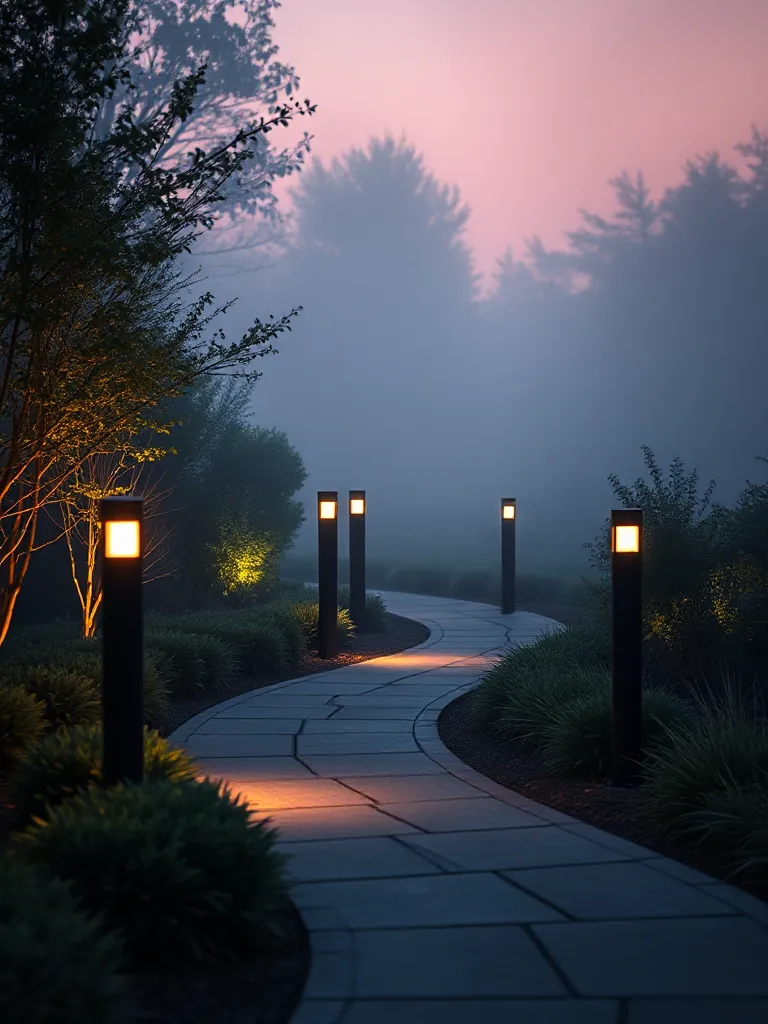
12) Festoon Lights for Party-Ready Lawns
Festoon lights stretch between posts to frame open areas. They bring instant celebration energy to lawns and terraces.
Set up a simple rectangle or crisscross grid to define the “room.” The overhead lines read as architecture under the stars. Opt for slightly larger bulbs for graphic impact in photos. Even spacing keeps the composition calm, not chaotic.
Use guy wires or sturdy poles to prevent sagging. A clean, intentional drape separates stylish from sloppy. Dim to a soft glow once guests arrive. Lower levels feel more flattering and invite longer conversations.
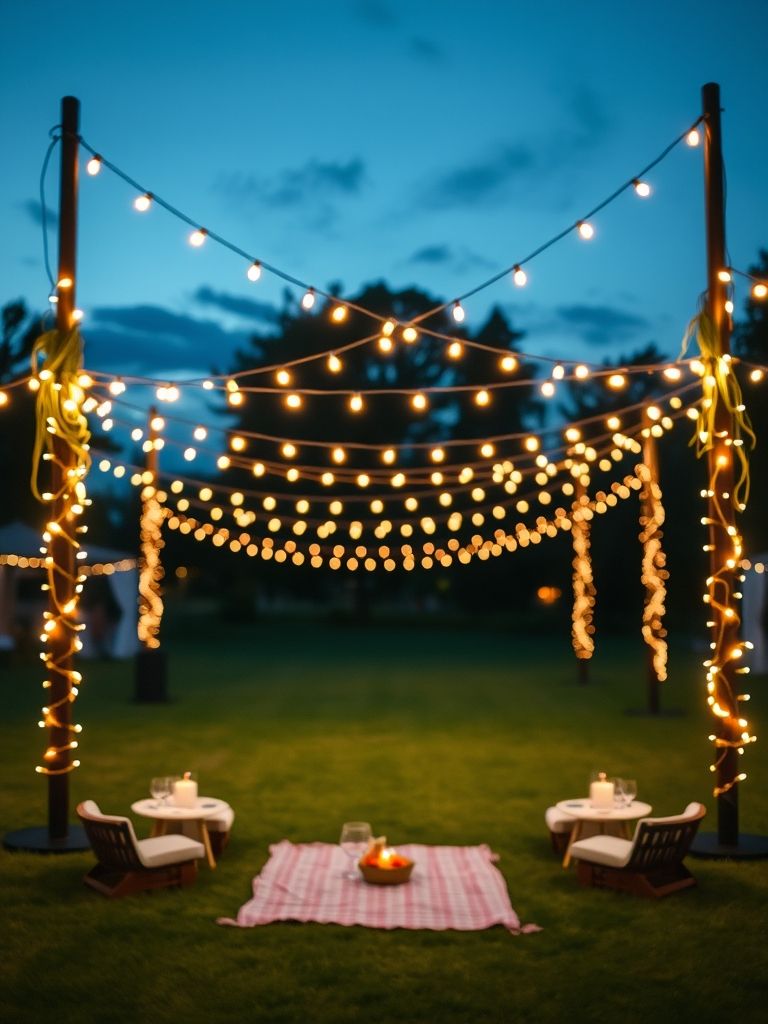
13) Smart RGBW Lighting Scenes for Mood Control
Smart fixtures let you shift from warm dinner light to playful color. RGBW systems add a dedicated white channel for better everyday use.
Create scenes for dining, stargazing, or weekend gatherings. One-tap presets simplify evenings and help keep light levels modest. Use saturated color sparingly as accents on walls or water. Too much color can overwhelm plants and feel theme-park-like.
Keep pathways and seating in warm whites for comfort. Color reads best when grounded by natural tones elsewhere. Schedule gentle fades at curfew to protect neighbors and wildlife. Thoughtful controls are part of good lighting etiquette.
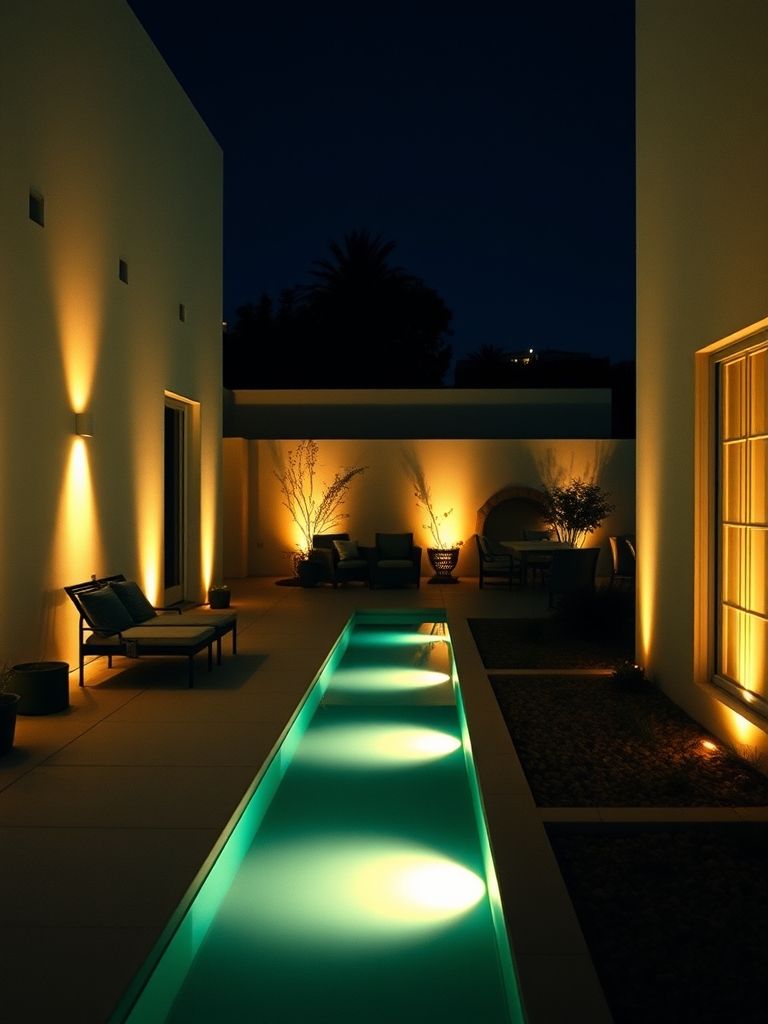
14) Motion-Sensor Path and Entry Lights
Motion-triggered lights support security without constant brightness. They wake up only when someone approaches.
Aim sensors to capture human movement, not swaying shrubs. Test sensitivity to prevent nuisance activations on windy nights. Blend sensor-equipped fixtures with your main design language. The best security lighting disappears into the concept.
Use warm color temperatures so arrivals feel welcoming. Cold light at the door can feel clinical or confrontational. Combine with a small, steady night light near thresholds. The baseline glow helps orientation before motion lights engage.
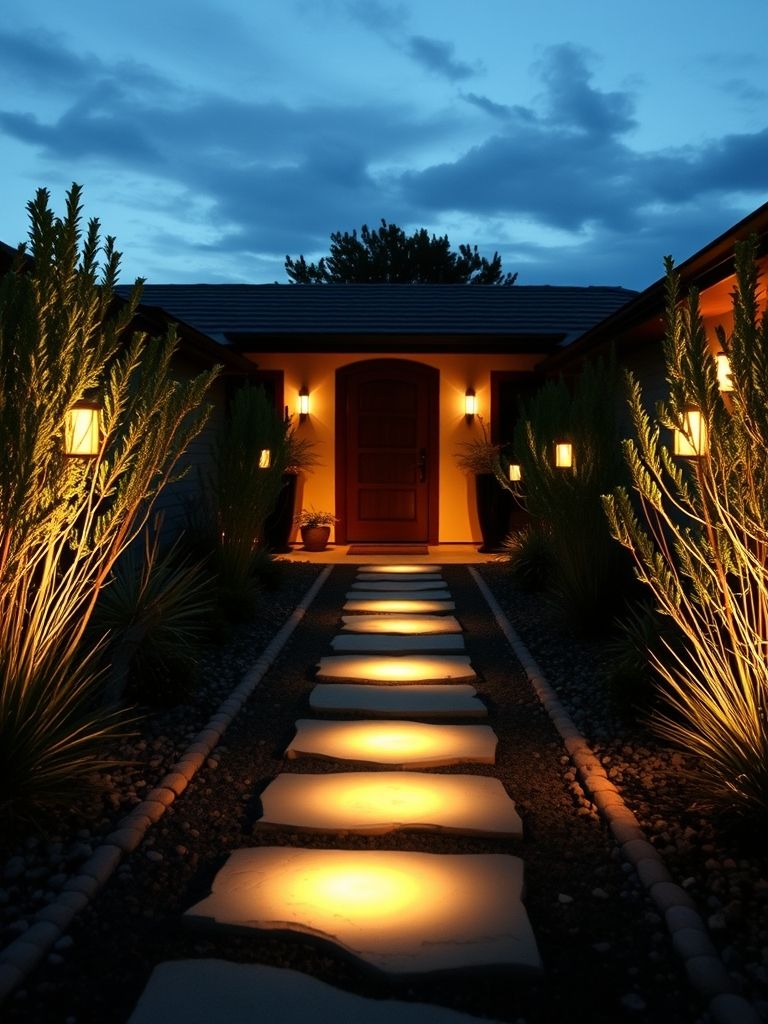
15) Candle and Fire Bowl Accents for Cozy Evenings
Nothing rivals the romance of flame. Candles, oil lanterns, and fire bowls add dance and warmth that LEDs can’t replicate.
Cluster multiple small flames rather than relying on one large one. The constellation effect looks richer and photographs beautifully. Consider smokeless fuel or gel for cleaner patios and balconies. It’s easier on textiles and guests with sensitivity.
Keep open flame away from low branches and dry grasses. Use non-flammable bases and never leave unattended. Balance firelight with low electric fills so faces are visible. The mix keeps the scene intimate without becoming murky.
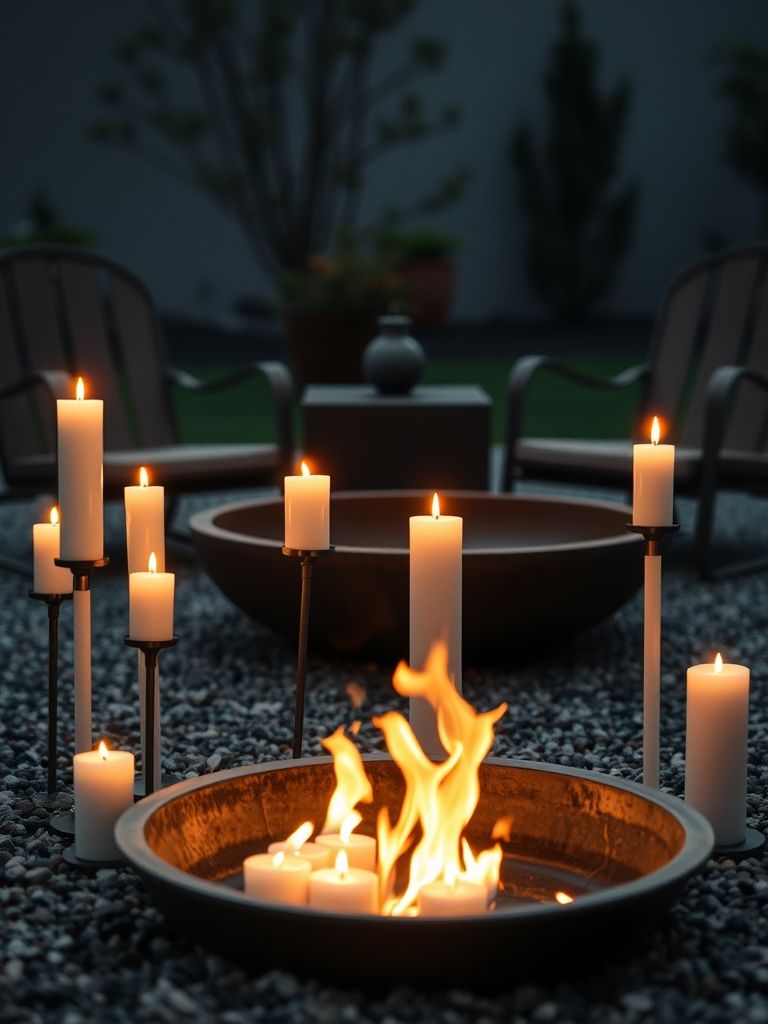
16) Underplanting Glow with Low-Glare Ground Lights
Low, shielded ground lights can make plant beds feel like they’re floating. The glow outlines shapes without exposing hardware. Place fixtures just inside bed edges to skim across mulch or gravel. This creates a crisp border and reveals subtle textures.
Avoid pointing light up into foliage at close range. Back-glare can look harsh and flatten leaf details. Test spacing with temporary stakes before committing. Even spacing maintains rhythm along long curves.
A warm, dim level is often enough. Think of it as a halo, not a spotlight.
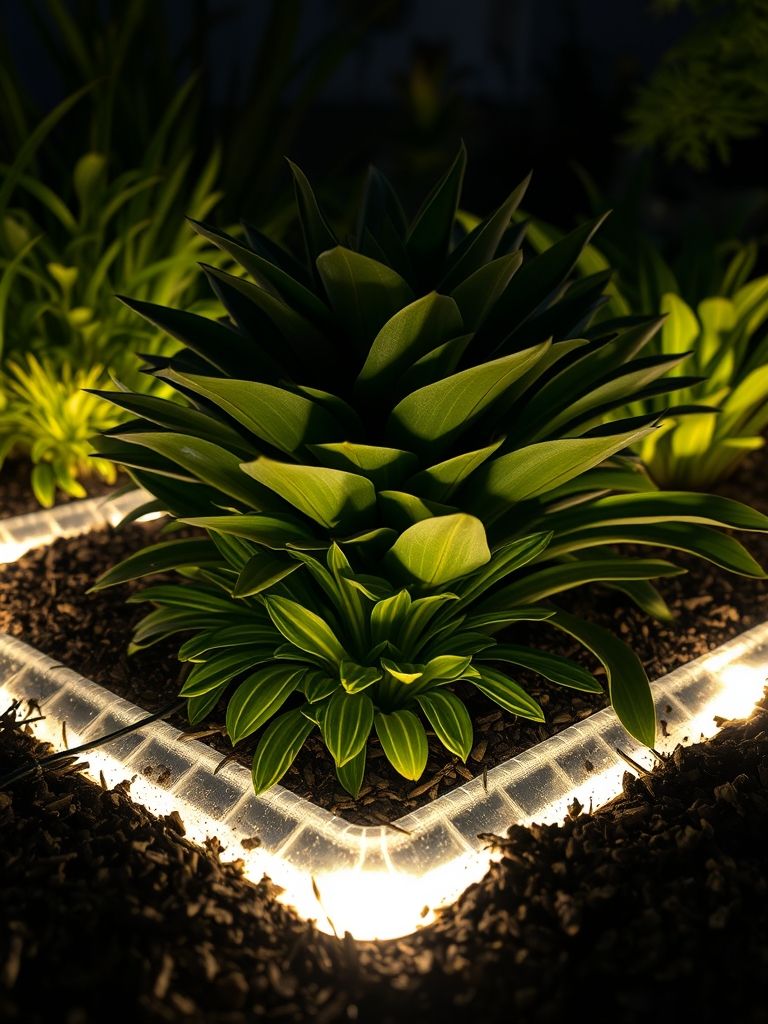
17) Trellis and Climber Backlighting
Backlighting trellises turns vines into lacework at night. The interplay of leaf and void becomes the artwork.
Mount linear LEDs behind the trellis uprights, facing the wall. The wall becomes a light box that reveals the pattern. Evergreen climbers give year-round payoff; seasonal vines offer evolving silhouettes. Both approaches tell a story across months.
Keep brightness gentle to preserve softness. Too much output can read harsh and reduce the filigree effect. Finish with a small bench or bistro set nearby. The illuminated trellis then doubles as a romantic backdrop.
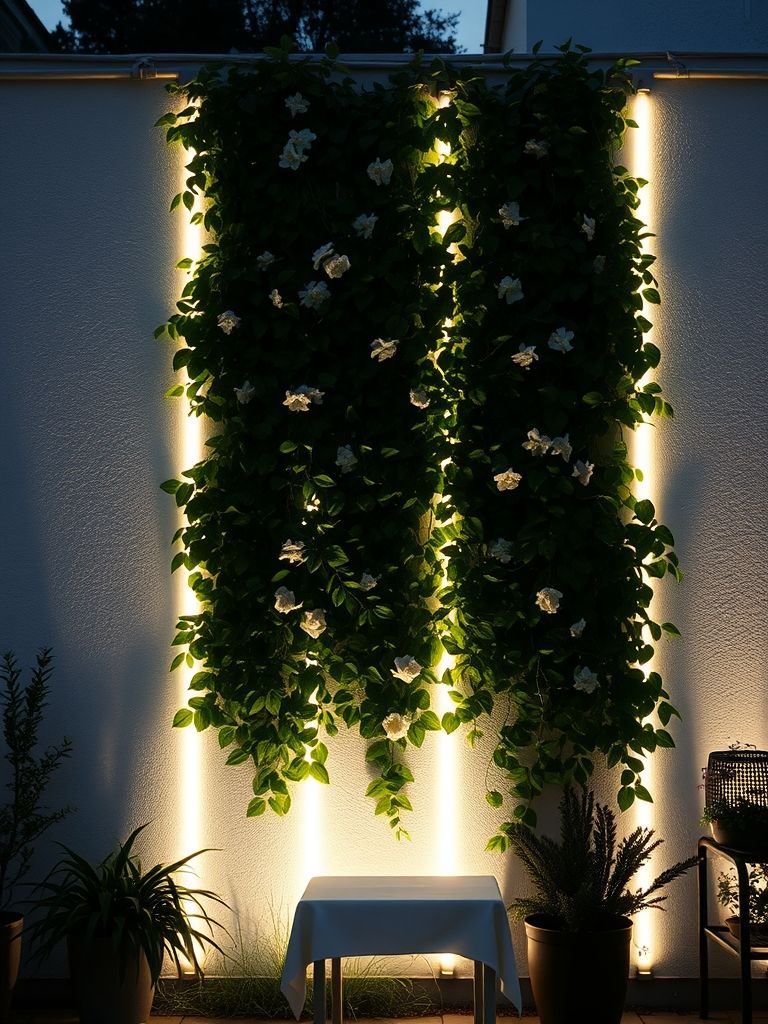
18) Driveway Edge Lighting with In-Ground Fixtures
In-ground markers along a drive provide guidance without visual clutter. They’re subtle by day and precise by night.
Install flush with the surface to accommodate tires and snow shovels. Durable housings and proper drainage are essential. Alternate sides or use paired placements at curves. The rhythm should cue drivers naturally rather than shout at them
Keep color temperature consistent with entry lighting. Cohesion makes the approach feel designed, not pieced together. Add a slightly brighter marker at the house number or gate. That gentle emphasis helps guests complete their journey.
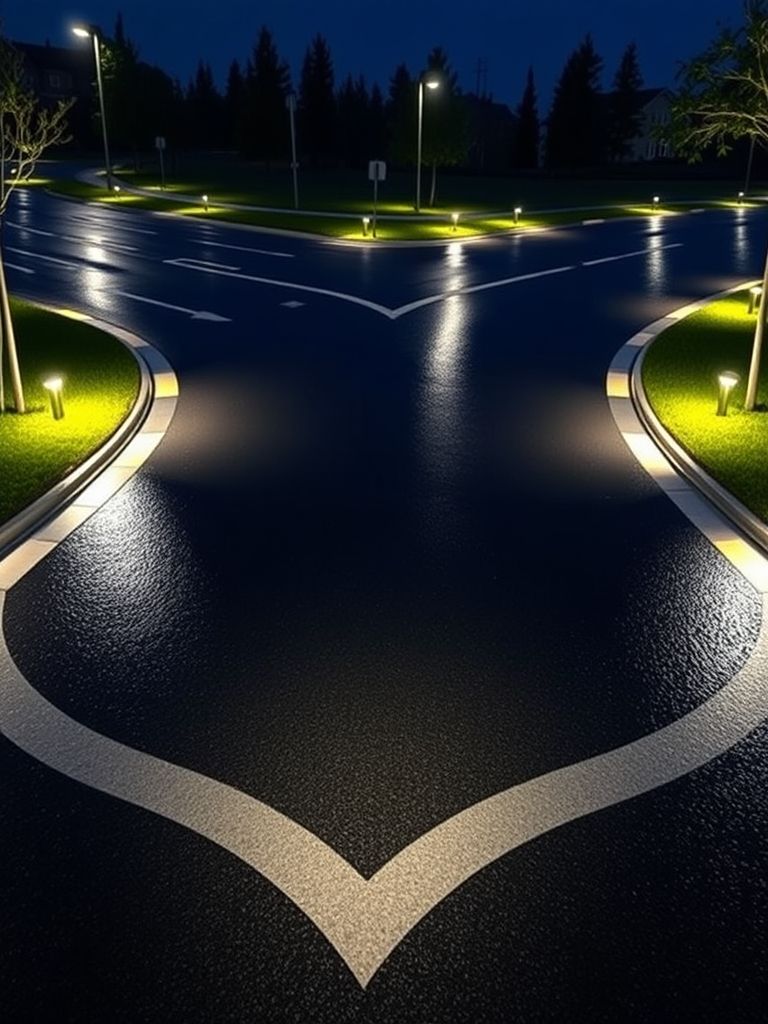
19) Seasonal Sparkle: Holiday and Event Layering
Temporary layers let your garden evolve with the calendar. Fairy nets, stake lights, and lanterns can come and go as needed. Choose reusable motifs that suit multiple seasons. Stars and spheres feel wintery with cool white and summer-festive with warm tones.
Avoid overloading every zone. Concentrate sparkle in one or two vignettes for tasteful impact. Use timers so displays respect curfews and energy goals. Automation reduces hassle and keeps things neighbor-friendly.
Store carefully in labeled bins to protect cords and lenses. Next season’s setup will be quicker and cleaner.
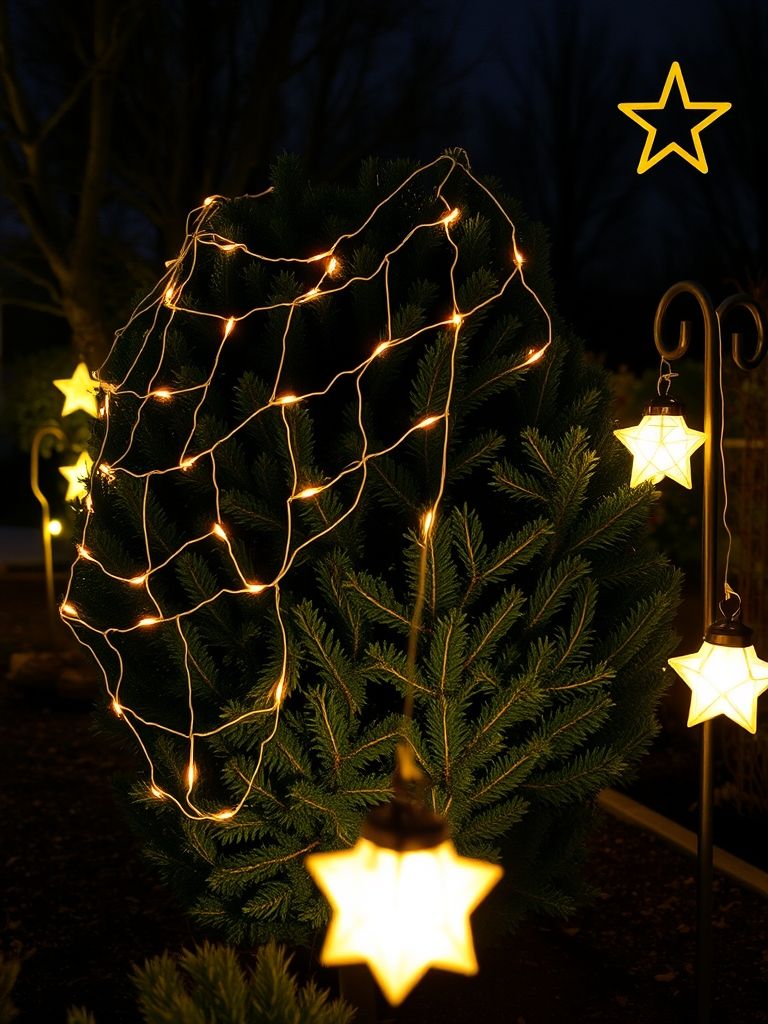
20) Solar + Low-Voltage Hybrid Layouts for Efficiency
Hybrid systems marry the simplicity of solar with the reliability of wired power. Each technology can play to its strengths.
Use solar for low-priority ambience—far corners, ornamental paths, or seasonal accents. Reserve low-voltage for core circulation and tasks. A small transformer with zone circuits lets you dim and schedule. It’s the backbone of a flexible, future-proof garden.
Keep color temperature and fixture style consistent across both systems. Visual cohesion matters more than power source. Revisit the plan yearly as plants grow and use patterns change. Good lighting is a living design that adapts over time.
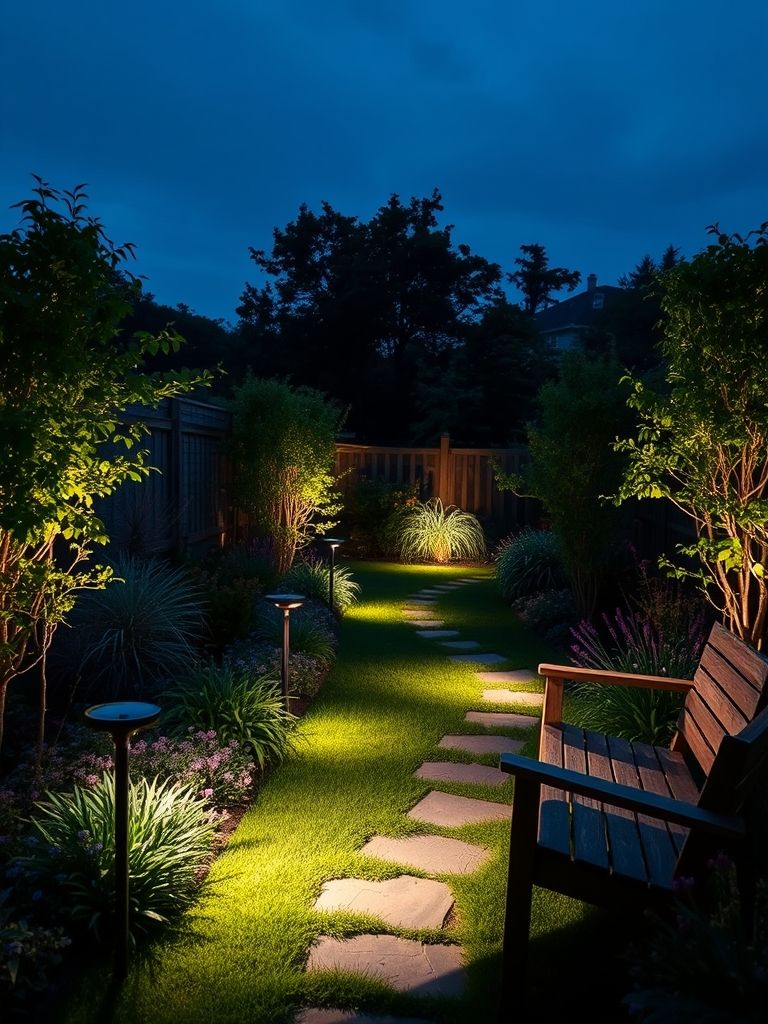
Conclusion on Garden Lighting Ideas
Great garden lighting is less about brightness and more about balance. Start with intent—what needs to be functional, what you’d like to highlight, and what deserves to fade into shadow. Then layer illumination at three heights: low along the ground for safe movement, eye level for comfort and conversation, and overhead for gentle canopy drama.
Keep your palette cohesive. Warm whites in the 2700–3000K range flatter foliage and skin tones, while dimmers and programmable scenes let the same space flex from dinner to stargazing. Be considerate of neighbors and wildlife: shield beams, aim light precisely, and set timers or curfews so the garden rests when you do.
Think long term. Choose wet‑rated, low‑voltage fixtures, conceal cabling thoughtfully, and plan for maintenance—clean lenses, check connections, and prune growth that blocks beams. Revisit positions each season as plants mature; a few inches of adjustment can restore depth and sparkle.
If you’re phasing the project, prioritize path and step safety first, then add focal accents on trees, water, or art, and finally layer in decorative sparkle for events. Use the image prompts above to brief a photographer, direct an installer, or generate test visuals before you buy. With a clear plan and a calm hand on the dimmer, your garden will feel effortless after dark.



